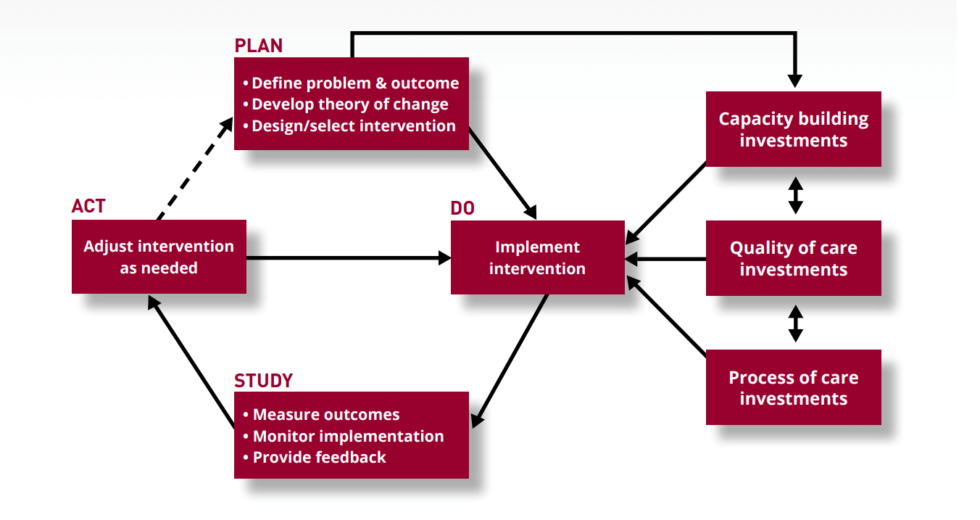Toward a Common Understanding of CQI in Child Welfare

Today, child welfare agencies are taking stock of their capacity for Continuous Quality Improvement (CQI) and thinking about how to build their capacity. These systems will all be responsible for the same basic CQI process—a cycle of problem solving activities that requires the deliberate use of evidence. This paper provides leaders and implementers with a common vocabulary for describing what CQI is, the core principles on which CQI rests, and the critical role that evidence plays throughout the CQI process.
What We Did
We set out to establish basic principles for generating actionable evidence and applying it to the decision-making process. One primary goal was to summarize the Continuous Quality Improvement philosophies that The Center for State Child Welfare Data (the Center) has developed in depth, particularly in the last 10 years.
We built on the Center’s longstanding approach to child welfare research and technical assistance to child welfare agencies. This paper also benefits from years of development and dissemination through the Center’s Advanced Analytics for Child Welfare Administration curriculum.
What We Found
Regardless of the problem at hand, a performance improvement plan is based on four main claims:
- I observe that there is a specific problem.
- I think it is because of this reason.
- I plan to implement some intervention.
- I think this intervention will result in the desired outcome.
An improvement plan is strongest when these four claims are supported by evidence. That means taking each claim and answering the question, “How do you know?” The answers to that question need to be generated according to a set of scientific principles that ensure the results are representative and free of bias.
What It Means
The specific system an agency puts in place to support the CQI process will vary from jurisdiction to jurisdiction, depending on organizational needs and resources. That said, state CQI systems will share common features. States wanting to establish a high-quality CQI system need to consider the following:
- Leadership and culture
- Data collection and analytic capacity
- CQI knowledge and skill building throughout the agency hierarchy
- Supportive administrative structures and functions
Best practices in evidence use and problem solving can be applied across performance improvement contexts. We highlight how a commitment to these practices has formed the foundation for: planning and implementing new interventions; generating evidence on outcomes for children in foster care; using administrative and fiscal data to plan for a Title IV-E waiver; and implementing performance-based contracts with private providers.



 Thank you for your interest in Chapin Hall’s research. Please share some information to access this file.
Thank you for your interest in Chapin Hall’s research. Please share some information to access this file.